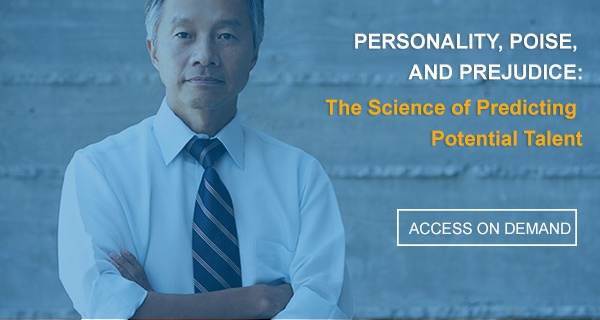In his previous session, renowned speaker and published author Kim E. Ruyle touched on implicit bias (rooted in our brains) that directs and influences who we select or hire. Rulye also reviewed six characteristics of high potentials including cognitive ability, drive and ambition, competence, personality and emotional intelligence, and learning agility.
Next Friday, September 22nd @ noon ET, Ruyle join us again to explore the neuroscience of personality, methods to mitigate implicit bias, and insights that will enhance your selection, development, and retention of high potential talent. Don’t miss this 30-minute webinar! Register now to attend the live session or to receive the recording to watch on-demand.
This week's #RPOA Weekly introduces resources to help you understand the scientific research behind selecting candidates based on potential rather than performance.
Our Brain: Does it Help or Hinder When it Comes to Hiring? - RPOA
Our brains (one of the most complex and magnificent organs in the human body) have more to do with who we select for our next position – and why we select them – than we realize. The brain is a complex mechanism, one that directs and influences our actions even when we aren’t necessarily aware of that fact. This unaware influence on our decision-making processes is called implicit bias.
Look for These Six Qualities When Assigning Your Next Leader - RPOA
Do you know who among your staff is prime leadership material? Perhaps there is an individual who always volunteers for additional items beyond their expected work load, or can just as easily work with members outside of their own team as they can with their own. These are laudable qualities, but will promoting such a person result in a great leader?
Understanding Learning Agility: The Number One Predictor of Leadership - RPOA
There are six traits common amongst effective leaders: cognitive ability, drive and ambition, competence, personality, emotional intelligence, and learning agility. Though none of these individual traits are necessarily valued one over the other, there is one trait that stands as the strongest predictor of leadership: learning agility.
Finding Authentic High Potential Talent in the Crowd: Where’s Waldo? [Webinar]
In this 24-minute session, Kim E. Ruyle, reviews research and provides a framework to accurately identify high potential talent, accelerate their development, and retain these critical employees.
5 Keys For Predicting Career Potential - Forbes
Predicting potential for future success based on past performance and demonstrated skills has its shortfall: it only works when the future work of an organization is very similar to its past. Here is a five-factor model created by Adam Mitchinson and Robert Morris of the Teachers College, Columbia University for identifying learning agility.
21st-Century Talent Spotting - Harvard Business Review
For the past several decades, organizations have based their hiring decisions on competencies. But we have entered a new era of talent spotting. Geopolitics, business, industries, and jobs are changing so rapidly that it’s impossible to predict the capabilities employees and leaders will need even a few years out. The question now is not whether people have the right skills; it’s whether they have the potential to learn new ones.















